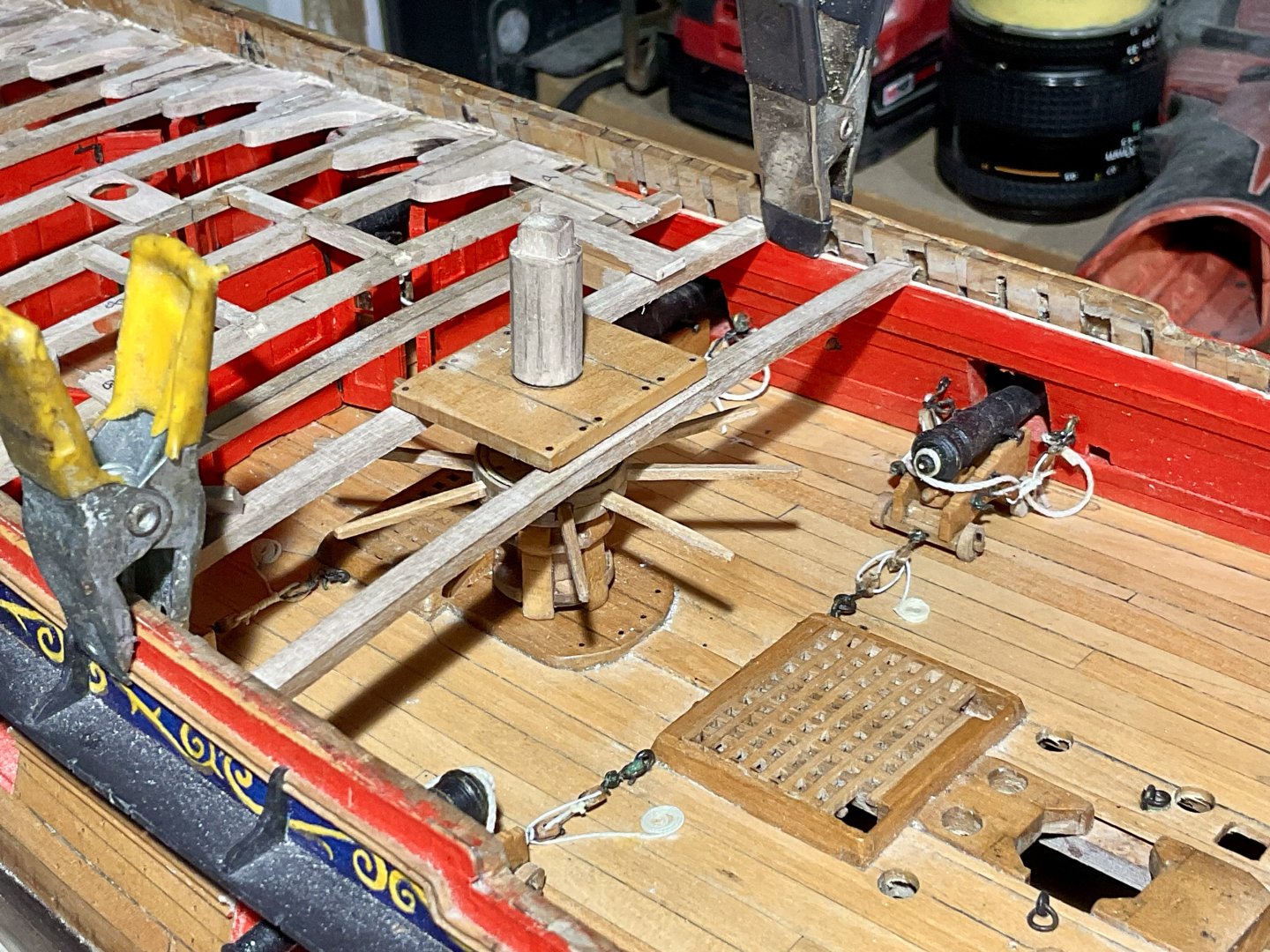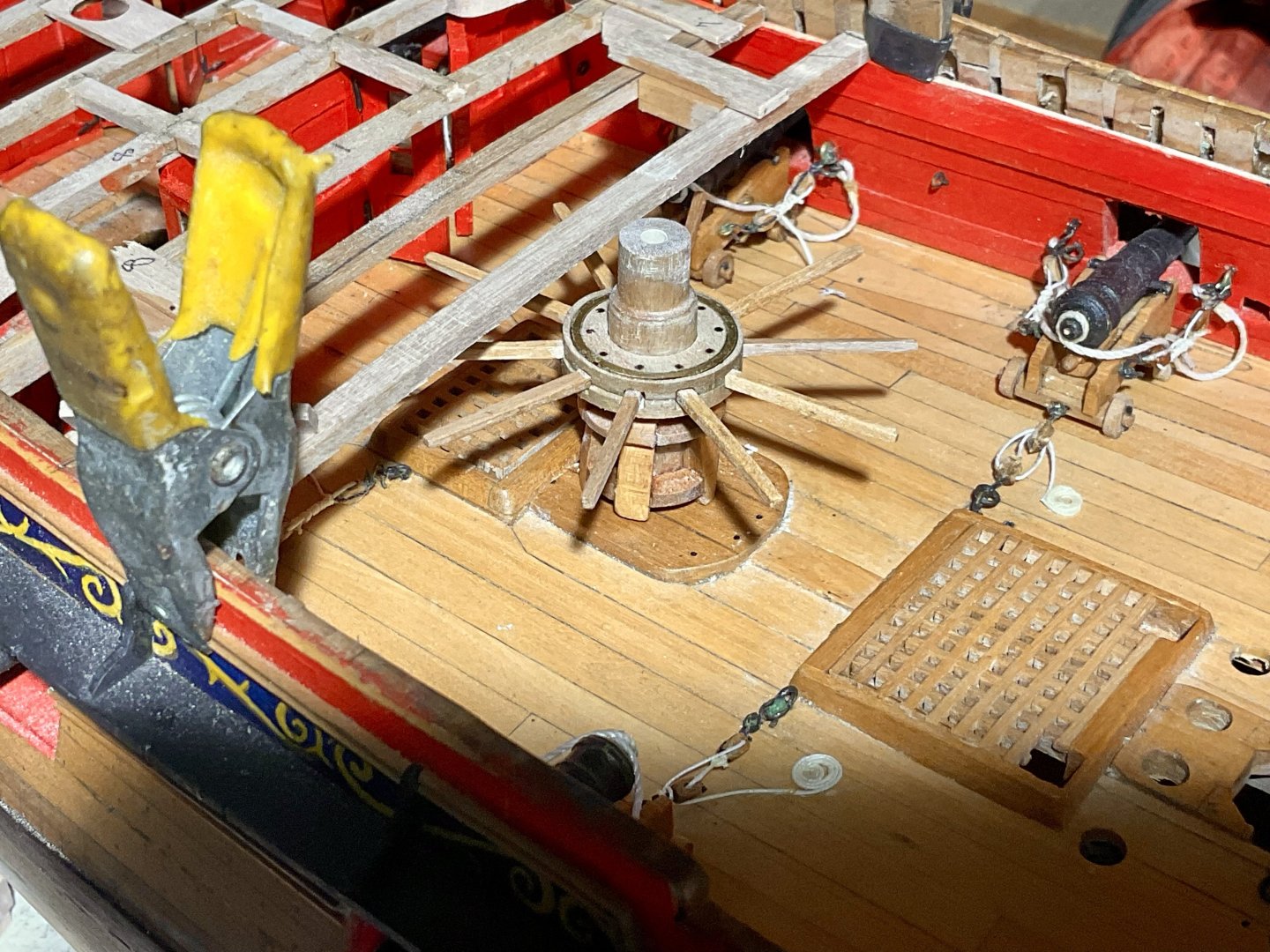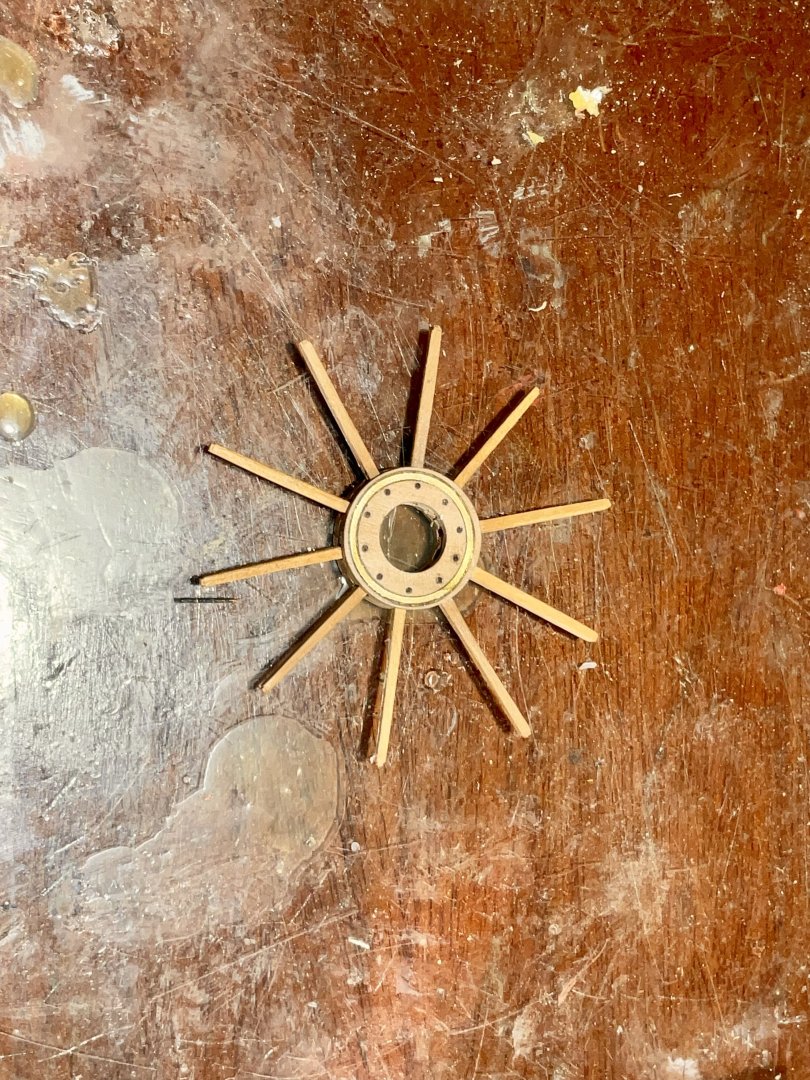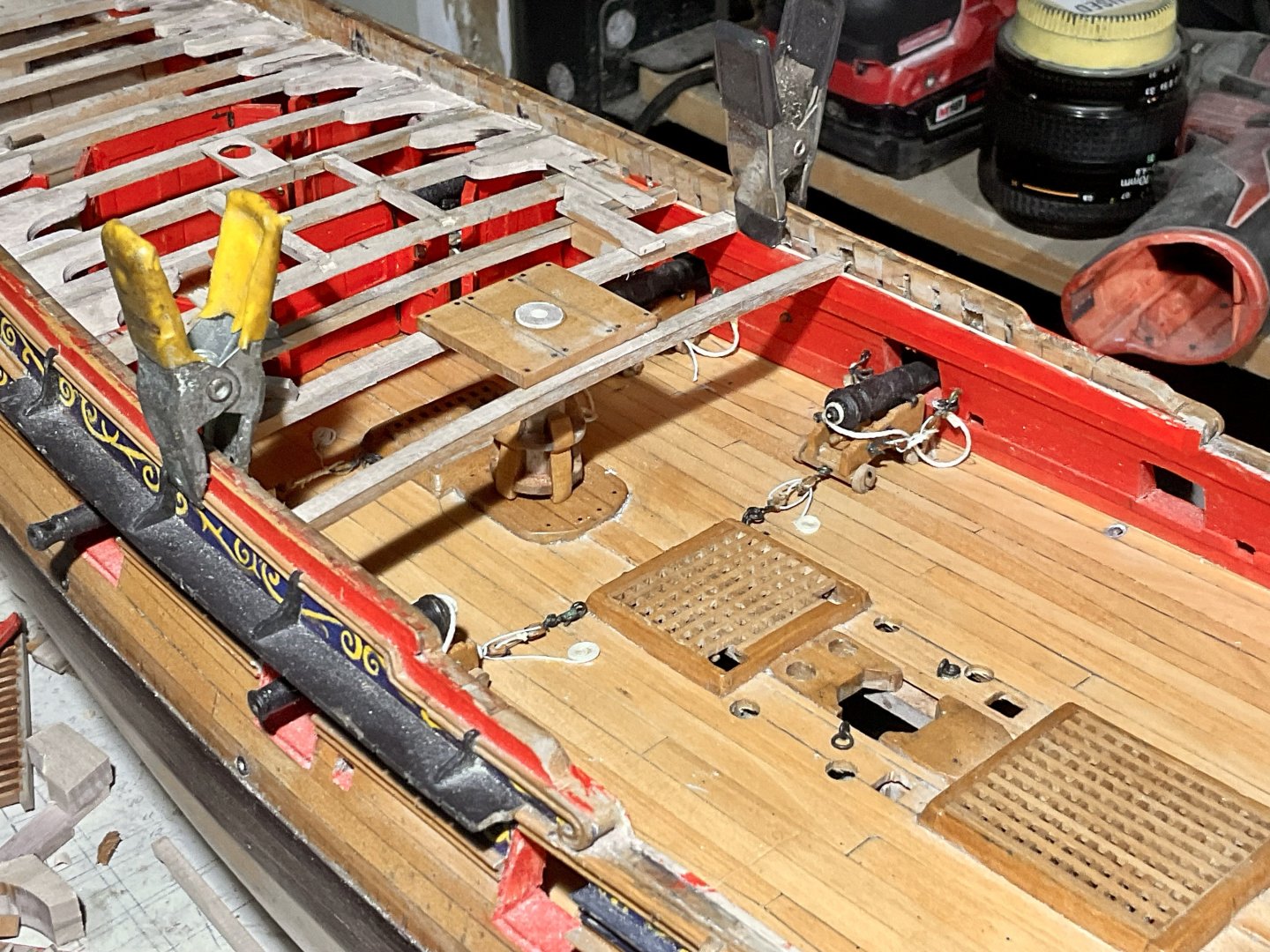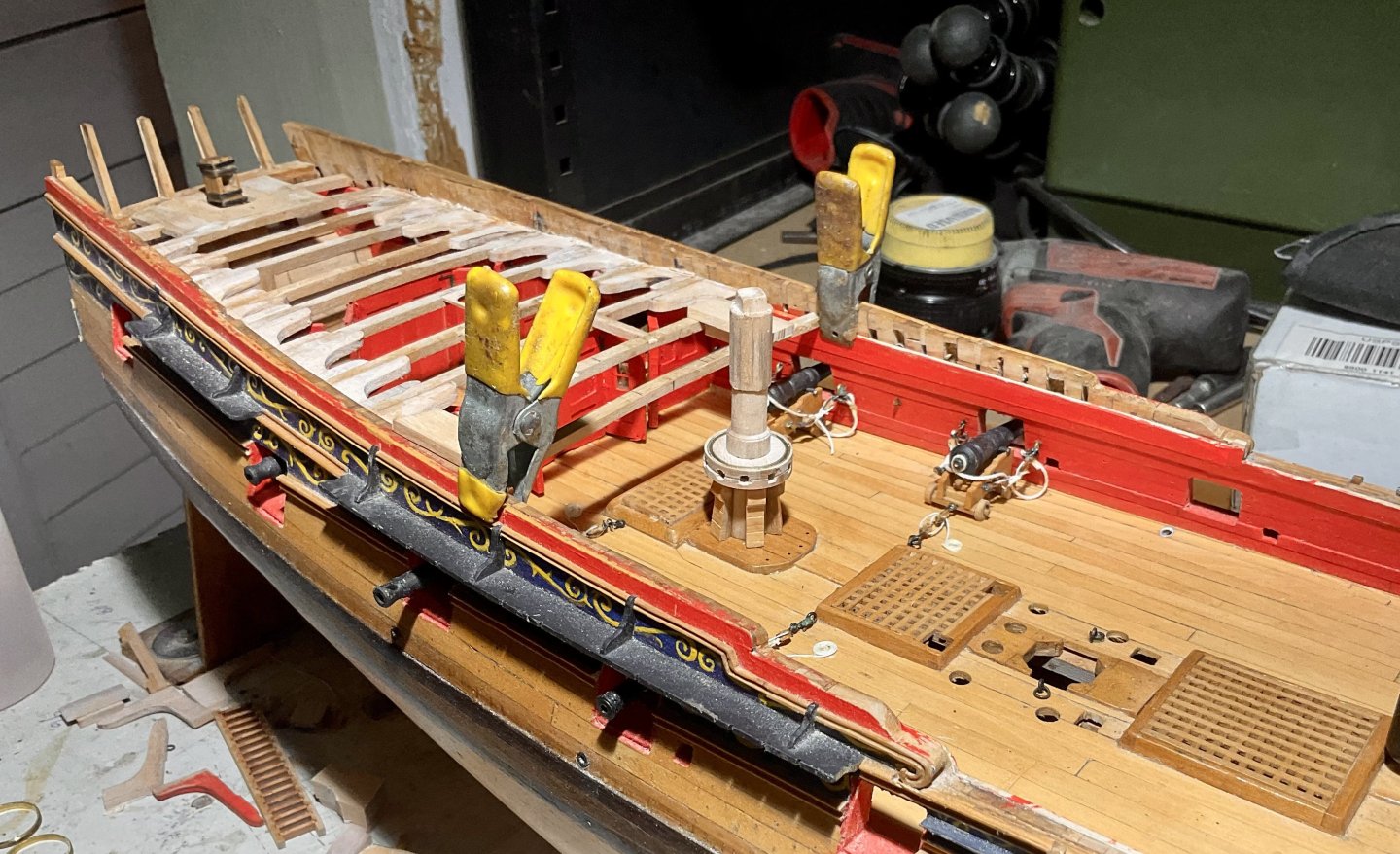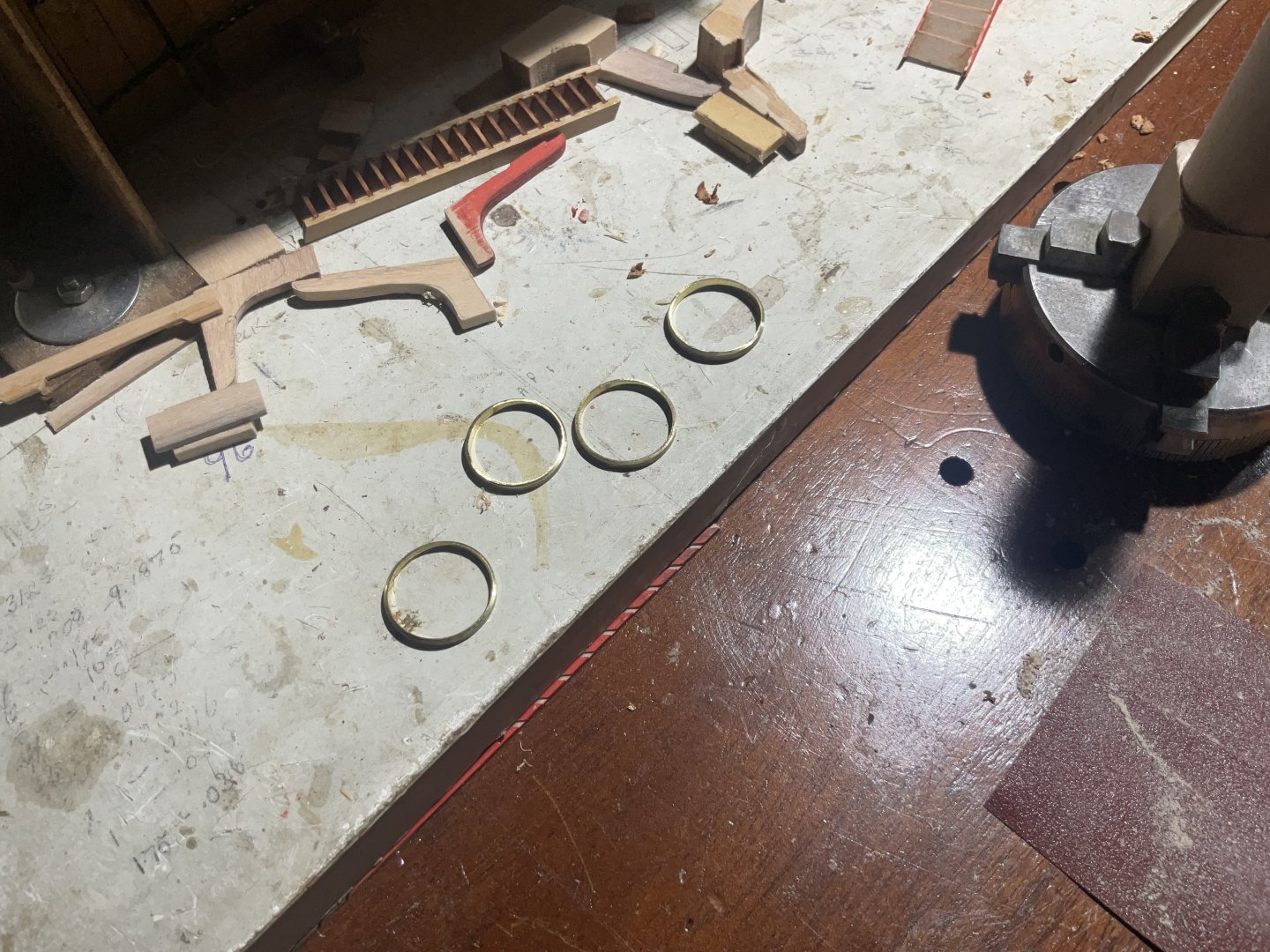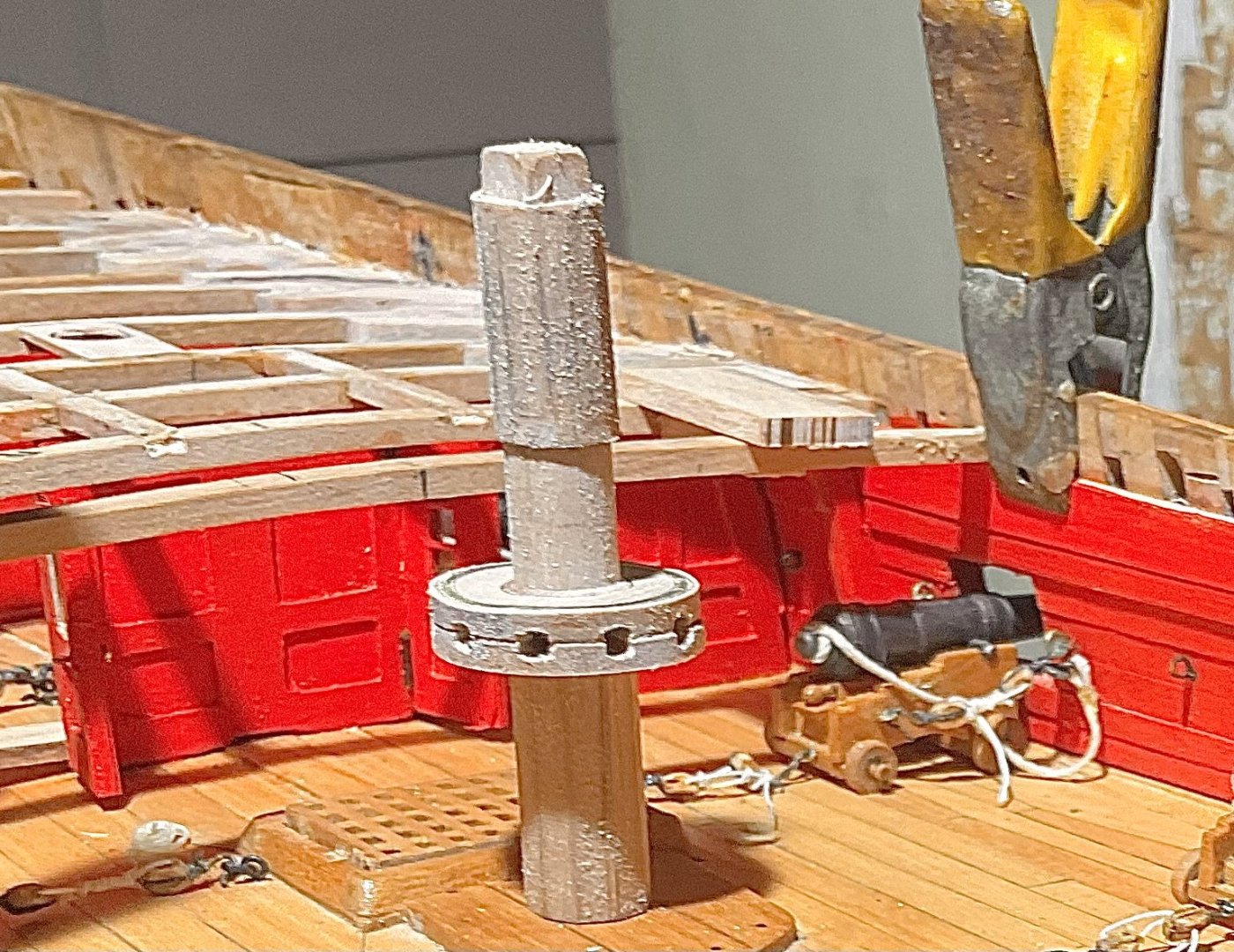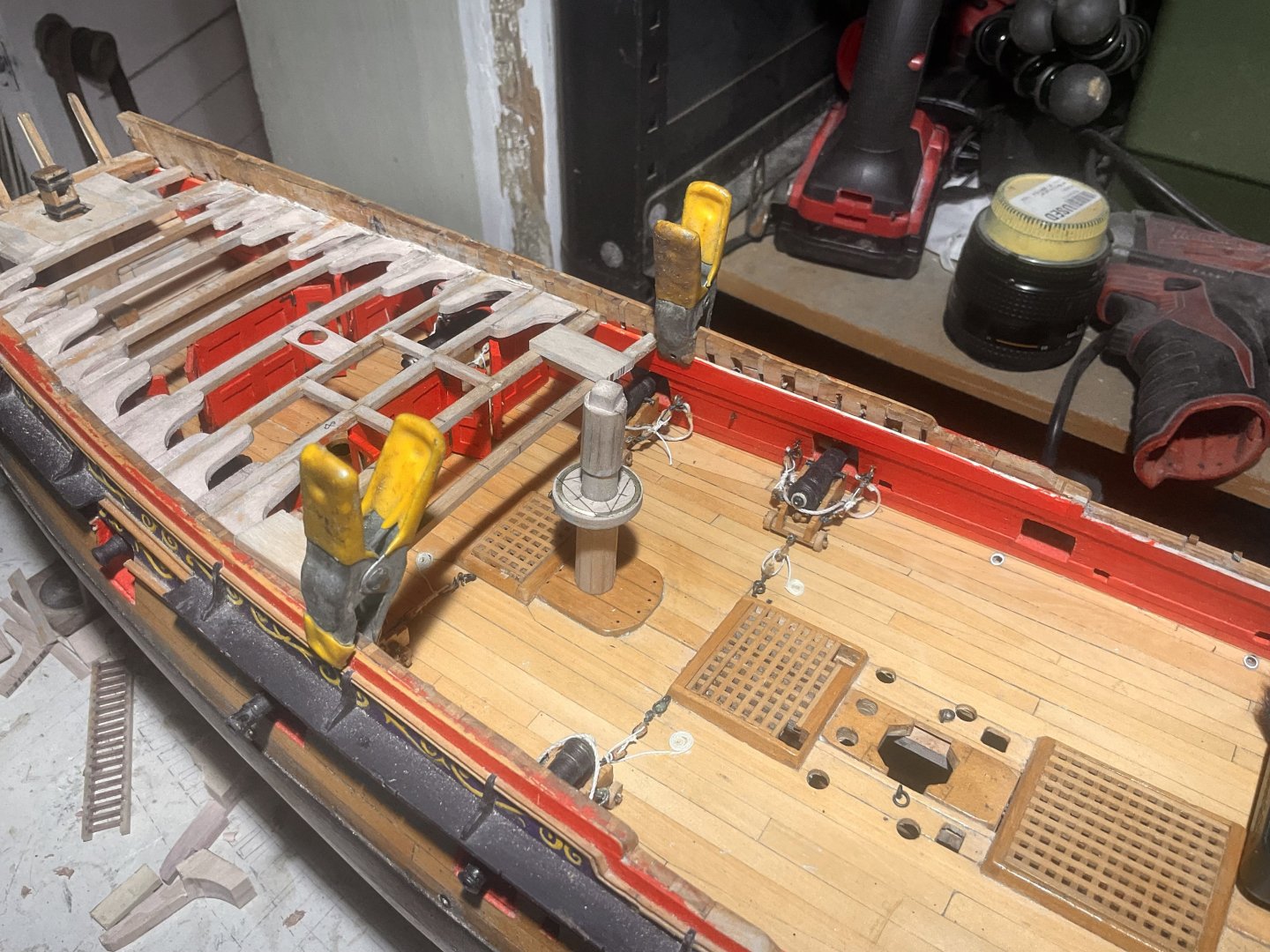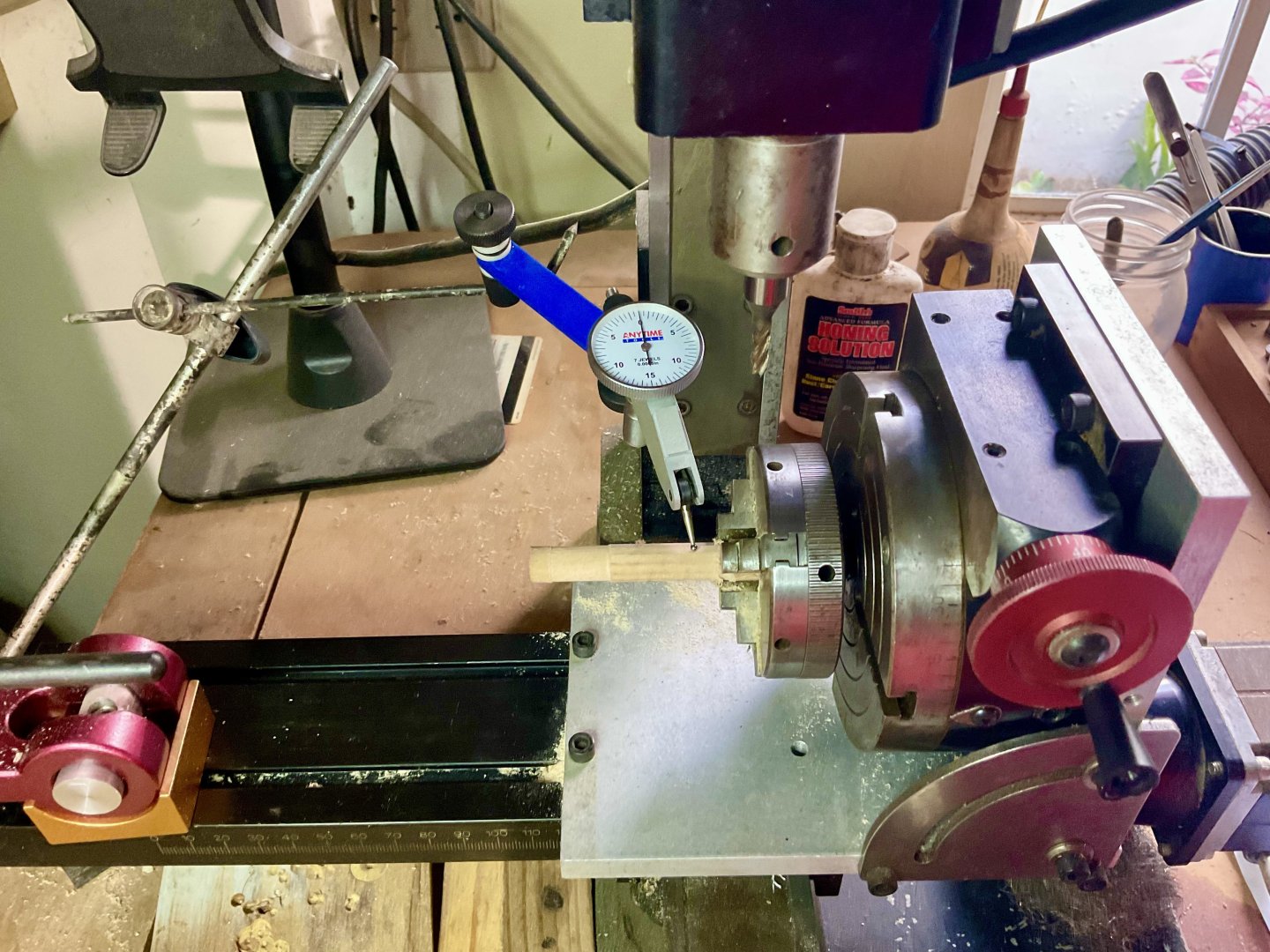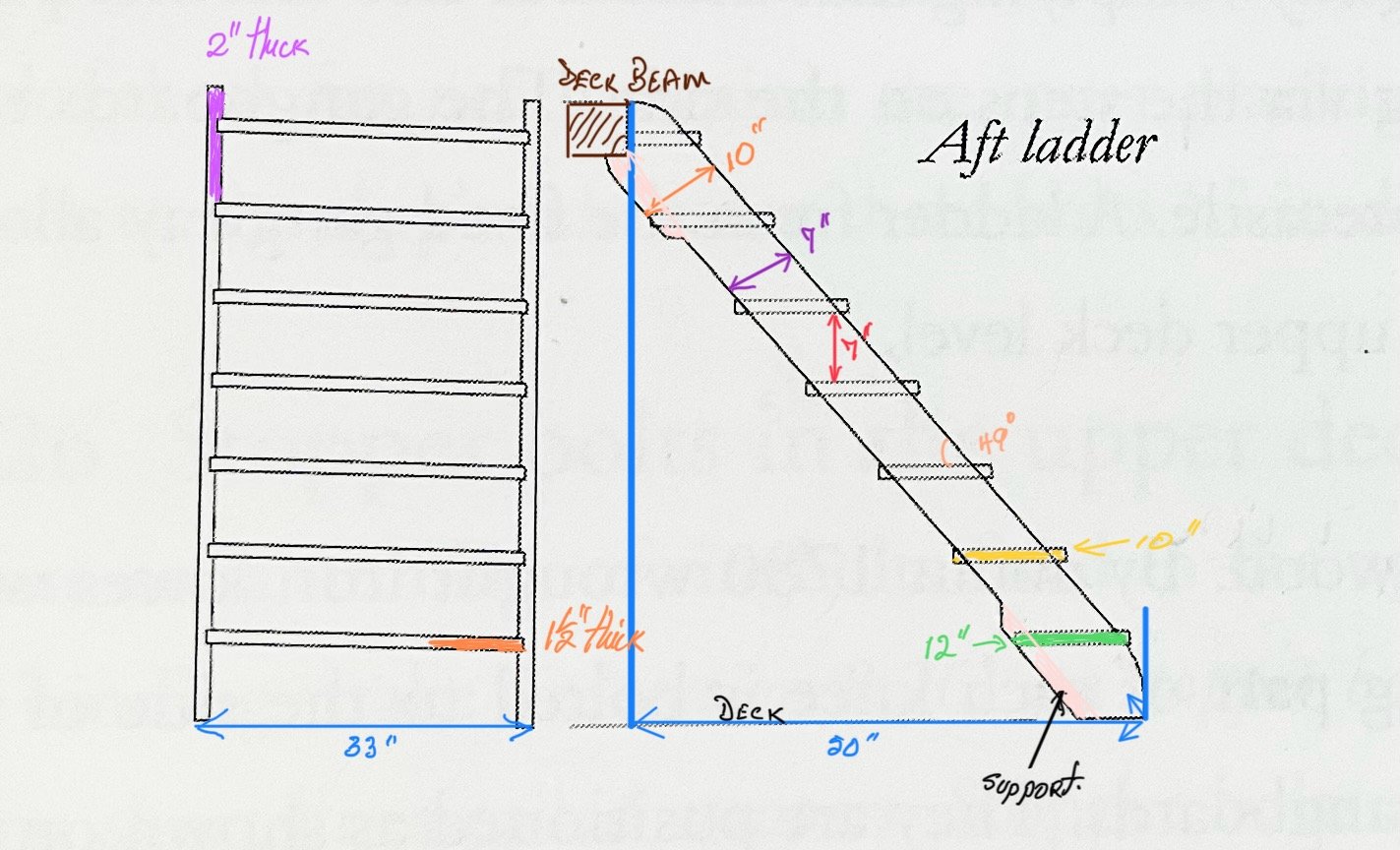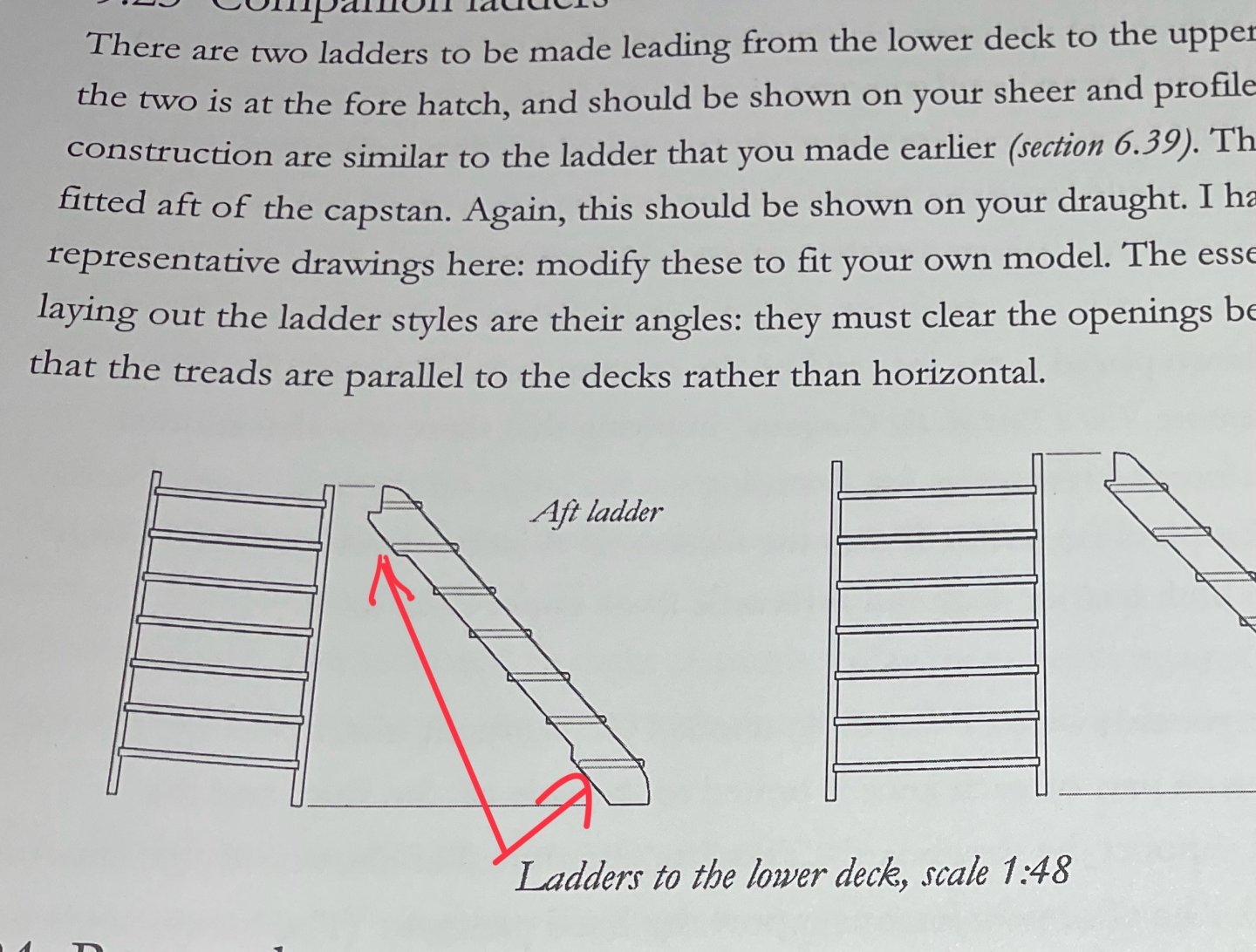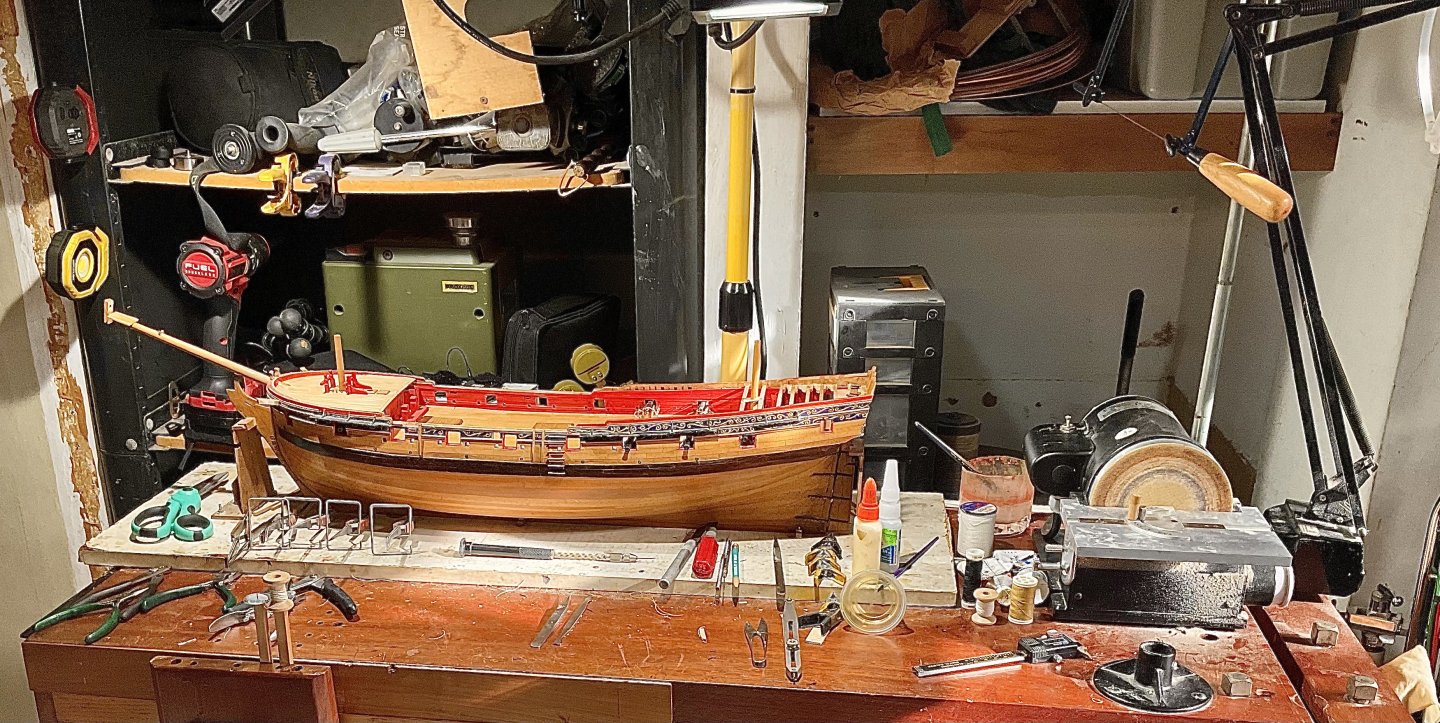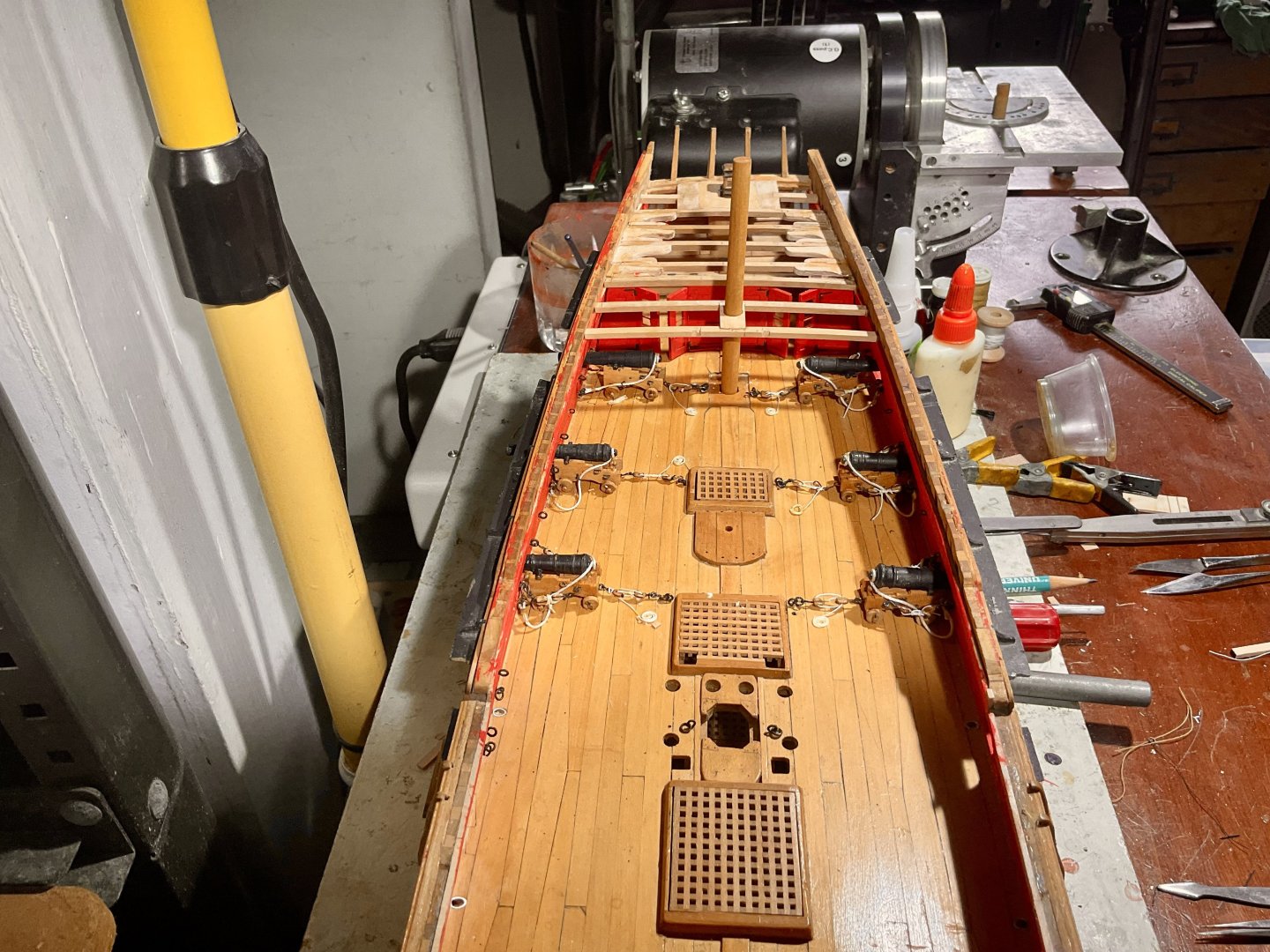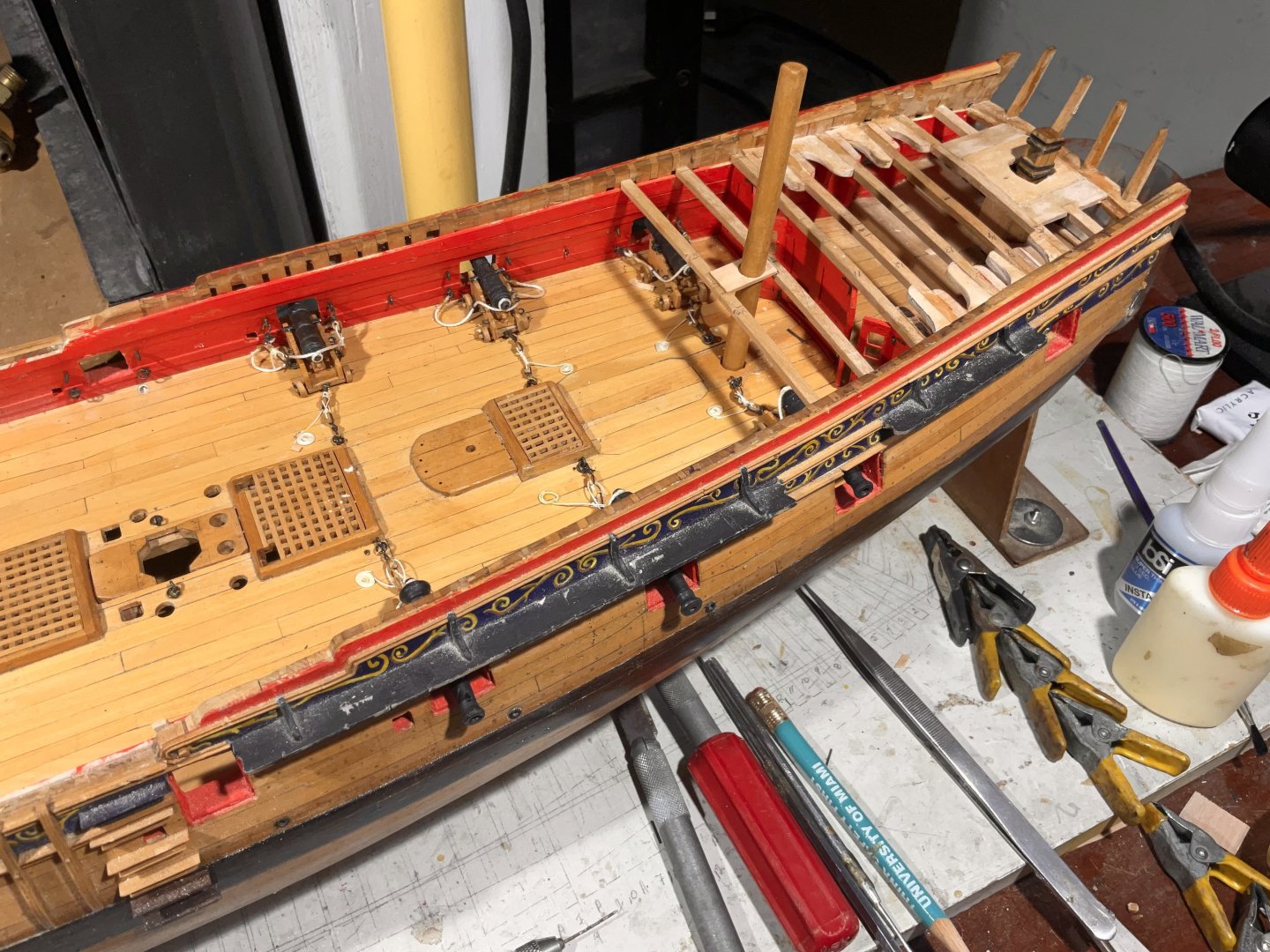-
Posts
1,484 -
Joined
-
Last visited
Content Type
Profiles
Forums
Gallery
Events
Everything posted by Kevin Kenny
-
Finial fitting of the lower Capstan. I had to fit the last two beams which are slightly wider than the rest to be able to get the finial height of the barrel. . Then added the partner and adjusted the Barrel so it is just above the level of the partner. That is it for the year as I am off to NY to cut down a christmas tree and role in the snow. Thank goodness for alcohol.
- 1,126 replies
-
PS no time square for us. We are going up to Kingston, up to a tree farm, using a regular saw to cut down the Christmas tree and hall it home on the roof of the car. We have not had a white Christmas for a very long time, so i am going to be happy to freeze my *** of this year. A few concerts are on the agenda and lost of good food.
- 1,126 replies
-
Hi Greg all my new tools are waiting for me in NY, nice new mill ends, the quick change for the lath, new mill ends, Mito_tuyo Caliper, edge finder, parallel for the mill etc . i wrote to sherline and they did say it was laser etched and that i could send it back and they would redo it for me for only $60. Plus freight. When this is all over i will send it up some time next year. I was hoping they had a tape that i could stick on the side, they thought it was a good idea but have not been forthcoming. The square hole were not done that well done because i did not have the correct size mill end and i used a center drill which i knew i would give trouble. When i get back in January i will be redoing everything and filming the process as i will have all the correct tools. i also had some creap with the deck beams so have to cheat a bit, the Capstan center hole lines up perfectly, so at least that good. Its nice to get back on the mill and lath. best regards kevin
- 1,126 replies
-
- 1,126 replies
-
- 1,126 replies
-
Thanks Henry, but if i do put it in Ill want to do it in Brass or wood. Need to refine the skill.
- 1,126 replies
-
Yes Alan i do have very fine chisels. But i want to horn the technique to film it so that i can share what Greg showed in the book. The reason i had trouble cutting the squares is that i did not have a mill end the exact size so used a center end instead. I was more interested in the technique than in the exact finish. I also went about constructing the part different than what Greg showed in the book. Stretching my skill to try figure it out my self. . Next time i will construct it the way he built it and then decide which method is better. I need some new mill ends to do it his way. I only have a few days left before i leave for New York so the next video will be last week of January next year so i have time. Also my rotary table has most of the numbers missing so i have written to Sherline to see how i can have them replaced. perhaps with a sticker. Failing that i will just have to mark the major stop points temporarily. Thats the only way to get them to line up exactly. also Greg used a dark wood insert, Ebony, i used a brass strip which was not the correct width. I may stick with that as it worked well, but might try cutting it out of a brass sheet.
- 1,126 replies
-
I did not have the correct size mill ends to cut the square holes. This is my first attempt. I will pick up some when i am in New York in 2 weeks time. I am not unhappy with this 1st try and know ill get it better. Some of the markings on my rotary table have worn off so it makes it difficult to cut the holes spot on. Trying to solve that issue.
- 1,126 replies
-
- 1,126 replies
-
- 1,126 replies
-
Greg I did use the dial indicator and it did not need any adjustment. The only issue I had was turning the cutter head in the wrong direction once.
- 1,126 replies
-
I am only now understanding this post. I did not realize that youtube now offers multiple languages. How fantastic.
- 1,126 replies
-
NRG has agreed to post a video log which i am presently indexing. With 134 videos it is taking much longer that i thought as i now have to watch each one and make notes. The first few were very primitive. So yes a index and log is essential.
- 1,126 replies
-
David i will add a note to the written description. That the good thing about youTube in that it provides a section to make corrections and editions. As always i truly appreciate the feedback.
- 1,126 replies
-
Here are my ship notes. I went back on the book but David does not give an explanation why he beefed up the sides at the top and bottom.
- 1,126 replies
-
This was the design that David has in the book. It was not explained but my guess is that this was added to the top and bottom of the ladder where the most pressure exists. You can ask David next time you see him.
- 1,126 replies
-
Not sure what you mean Alan, the step actually goes in three more beams that are not yet installed. The only thing behind the step are some blocks on the deck and the bulkhead.
- 1,126 replies
-
- 1,126 replies
-
- 1,126 replies
About us
Modelshipworld - Advancing Ship Modeling through Research
SSL Secured
Your security is important for us so this Website is SSL-Secured
NRG Mailing Address
Nautical Research Guild
237 South Lincoln Street
Westmont IL, 60559-1917
Model Ship World ® and the MSW logo are Registered Trademarks, and belong to the Nautical Research Guild (United States Patent and Trademark Office: No. 6,929,264 & No. 6,929,274, registered Dec. 20, 2022)
Helpful Links
About the NRG
If you enjoy building ship models that are historically accurate as well as beautiful, then The Nautical Research Guild (NRG) is just right for you.
The Guild is a non-profit educational organization whose mission is to “Advance Ship Modeling Through Research”. We provide support to our members in their efforts to raise the quality of their model ships.
The Nautical Research Guild has published our world-renowned quarterly magazine, The Nautical Research Journal, since 1955. The pages of the Journal are full of articles by accomplished ship modelers who show you how they create those exquisite details on their models, and by maritime historians who show you the correct details to build. The Journal is available in both print and digital editions. Go to the NRG web site (www.thenrg.org) to download a complimentary digital copy of the Journal. The NRG also publishes plan sets, books and compilations of back issues of the Journal and the former Ships in Scale and Model Ship Builder magazines.



